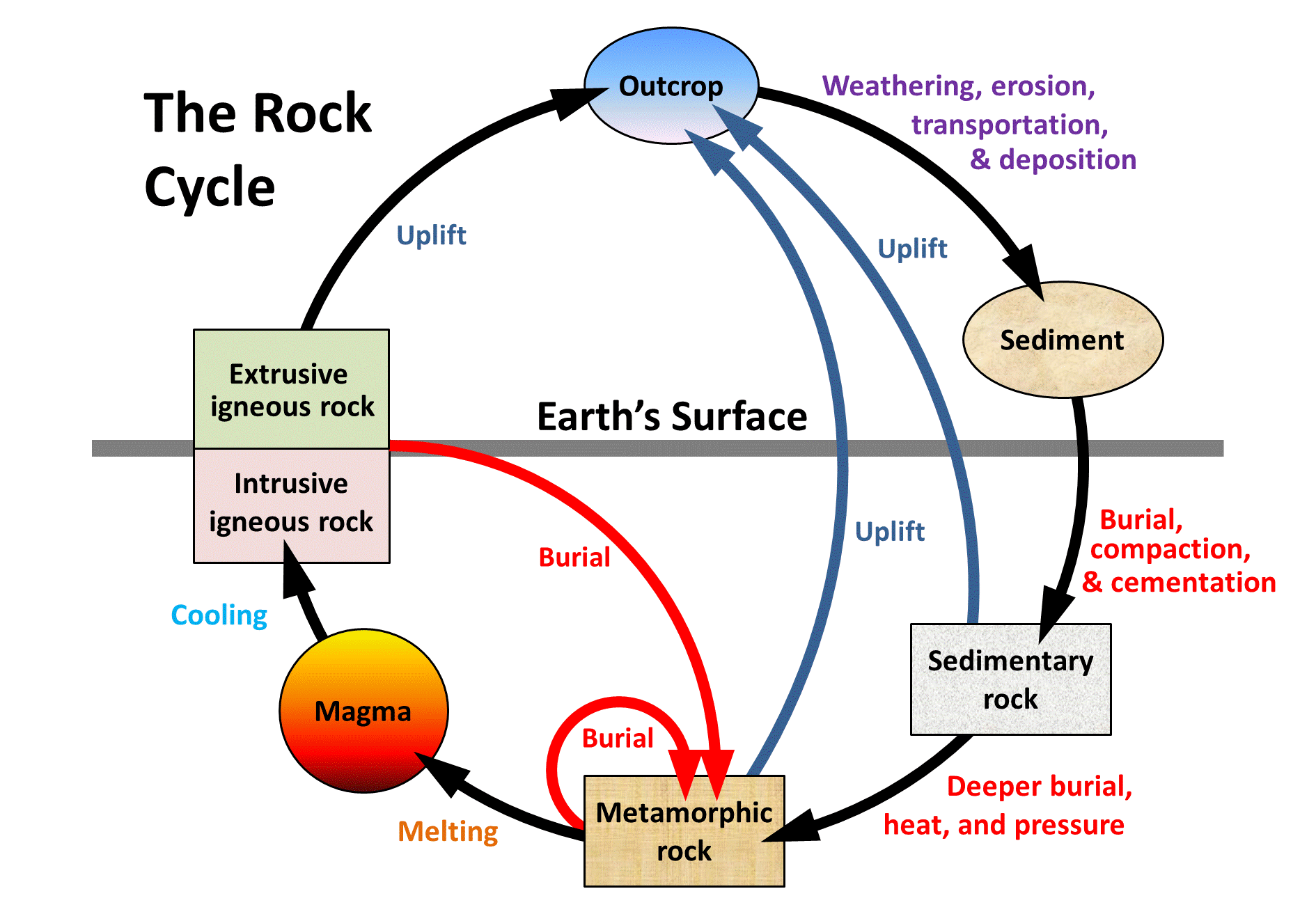Chapter 7 Metamorphism and Metamorphic Rocks
Learning Objectives
After carefully reading this chapter, completing the exercises within it, and answering the questions at the end, you should be able to:
- Summarize the factors that influence the nature of metamorphic rocks and explain why each one is important.
- Describe foliation and explain the mechanisms for its formation in metamorphic rocks.
- Classify metamorphic rocks on the basis of their texture and mineral content, and explain the origins of these differences.
- Describe the various settings in which metamorphic rocks are formed and the links between plate tectonics and metamorphism.
- Summarize the important processes of regional metamorphism, and explain how rocks that were metamorphosed at depths of 10 kilometres or 20 kilometres can now be found on Earth’s surface.
- Describe the important processes of contact metamorphism and metasomatism, and the key role hydrothermal fluids.
Metamorphism is the change that takes place within a body of rock as a result of it being subjected to conditions that are different from those in which it formed. In most cases—but not all—this involves the rock being deeply buried beneath other rocks, where it is subjected to higher temperatures and pressures than those under which it formed. Metamorphic rocks typically have different mineral assemblages and different textures from their parent rocks (Figure 7.0.1) but they may have the same overall chemical composition.

Most metamorphism results from the burial of igneous, sedimentary, or pre-existing metamorphic rocks to the point where they experience different pressures and temperatures than those at which they formed (Figure 7.0.2). Metamorphism can also take place if cold rock near the surface is intruded and heated by a hot igneous body. Although most metamorphism involves temperatures above 150°C, some metamorphism takes place at temperatures lower than those at which the parent rock formed.

Image Descriptions
Figure 7.0.2 image description: As sedimentary rock (or igneous rock) gets buried deeper and comes under increased heat and pressure, it can turn into metamorphic rock. That rock may be returned to surface for us to see, but if it gets buried deeper still it may partially melt to become magma. [Return to Figure 7.0.2]
Media Attributions
- Figure 7.0.1, 7.0.2: © Steven Earle. CC BY.
the transformation of a parent rock into a new rock as a result of heat and pressure that leads to the formation of new minerals, or recrystallization of existing minerals, without melting
